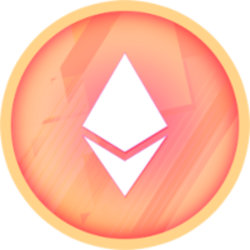From America’s largest bank to its biggest asset manager, Wall Street investment strategies once reserved for private banking clients are increasingly being offered to Main Street investors.
In the midst of a market correction and ongoing uncertainty about the outlook for U.S. stocks and the global economy, JPMorgan Chase and BlackRock are among major players in the ETF space making bets that private strategies will continue to see greater adoption. That includes private credit as a mainstream bond portfolio holding, as well as equity income strategies that involved more complicated trading than traditional dividend equity funds.
“Across our business we are looking at an incredible amount of demand from ETF investors who are looking for access to alternative investment funds, and we find managers are looking to push more into that wealth space to tap into growth to meet investors where they are,” Ben Slavin, managing director and global head of BNY Mellon ETF business, told CNBC’s Bob Pisani on last week’s “ETF Edge” from the Exchange ETF Conference in Las Vegas.
“While mutual funds still make a ton of sense for retirement accounts, interval funds have been really successful in allowing for access to private credit,” Jay Jacobs, head of BlackRock’s US Thematic and Active ETF business, told Pisani from the conference. He was referring to a form of closed-end fund that has existed for a long time, and in which investors can access private credit, albeit with less liquidity than in an ETF.
BlackRock, the world’s largest asset manager and biggest issuer of ETFs, acquired a provider of alternative investments research last year, Preqin, and Jacobs said the firm plans “more indexing of private investments.”
The SEC recently approved the first private credit ETF, though not without some controversy.
Lack of liquidity in private markets is a key issue for ETFs to solve as they attempt to grow the alternative investment side of the business. These kinds of funds, like Van Eck’s BDC Income ETF — which invests in business development companies that make private loans to small and mid-sized companies — have traditionally been illiquid but because of innovation in the ETF industry, more people are gaining access.
Another trend that is catching on within the ETF market amid the current volatility in stocks is active ETFs designed to offer downside protection while capitalizing on income gained from selling call options. ETFs including the JPMorgan Equity Premium Income ETF (JEPI) and JPMorgan Nasdaq Equity Premium Income ETF (JEPQ) use this approach.
Goldman Sachs Asset Management’s Bryon Lake said on a recent “ETF Edge” — he was among the leaders of the JPMorgan ETF business when JEPI was created and now runs a similar strategy at Goldman — “You sell that call, you get the premium for that, and then you can pay that out as income. As we look at this space, that’s one category that’s been evergreen for investors. A lot of investors are looking for income on a consistent basis.”

Funds like JEPI give investors exposure to sell call strategies.
“There’s multiple ways to win with a strategy like this, as you can remain invested in the equity side and get the return, and capture that premium income which adds to a growing need and growing desire for income across all asset classes, and that’s a really effective way to stay in the market,” Travis Spence, head of JPMorgan Asset Management’s global ETFs business, said on last week’s “ETF Edge.”
The expense ratio on the JPMorgan Equity Premium Income ETF is 0.35 percent, with a 7.2 percent dividend. The firm also offers the JPMorgan Nasdaq Equity Premium Income ETF with the same expense ratio, but with a dividend yield right now of 10.6 percent. “Its an effective trade off in a choppy market,” Spence said.
Thirty years ago, an investor would have had to be a high-end client of a Wall Street private bank that would customize a portfolio in order to participate in the options fund strategy, said Ben Johnson, Morningstar’s head of client solutions and asset management. But now, “ETFs make it easier and cheaper to implement these strategies,” he said.
Buffer ETFs run by Goldman and others, which cap both market upside and downside as a way to mitigate volatility in returns, are also gaining in popularity.
“Clearly, when you look at the flows, there is demand for these products,” Slavin said. “Until recently, it was not really well known,” he added.
The premium income and buffer ETFs can offer investors a way to stay in the market rather than run from it. But in a market that has seen steep declines of late, Jacobs says these strategies also offer a way for investors to get into the market with less fear of quickly losing money. That’s an important point, he said, with trillions of dollars sitting in money market accounts. “A lot of investors are using buffered products to step out of cash and into the market,” he said. “No one wants to be the one who held cash for five years and just put their money into the market and watched it sell off 10%.”
After watching the S&P 500 already lose more than 10% of its value in a three-week period this month, ETF strategies designed to offer protection are getting more attention from advisors and their clients. But Johnson says investors should remember that there is nothing “new” about these investment strategies that have been used on Wall Street for decades, and investors need to weigh both the pros and cons of wrapping them in an ETF structure.
Private credit ETFs are a good example, he said, since interval funds that trade under ticker symbols are already available, albeit in a less liquid trading format. ETFs have structural advantages to offer — an inexpensive way to gain access to what have long been “really expensive, super illiquid investments,” he said. But on the other side, to be approved by the SEC, the ETFs need to “water down a lot of what investors want,” he added.
Nevertheless, Johnson thinks it may just be a matter of time before private credit ETFs are standard. “I think back to bank loans, circa 2011,” he said, when many “balked at ever wrapping it in an ETF. But now that seems fairly common place.”











































